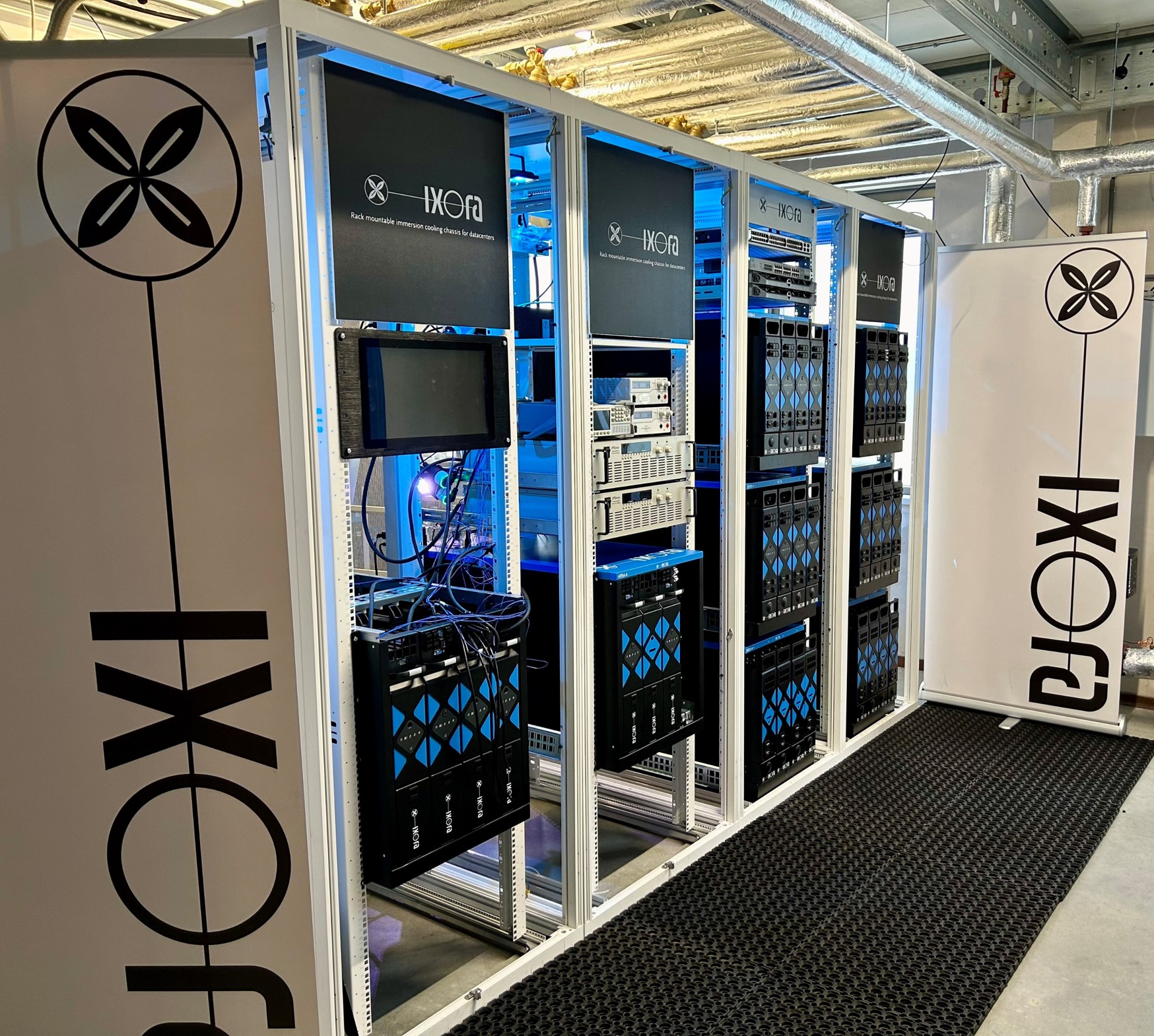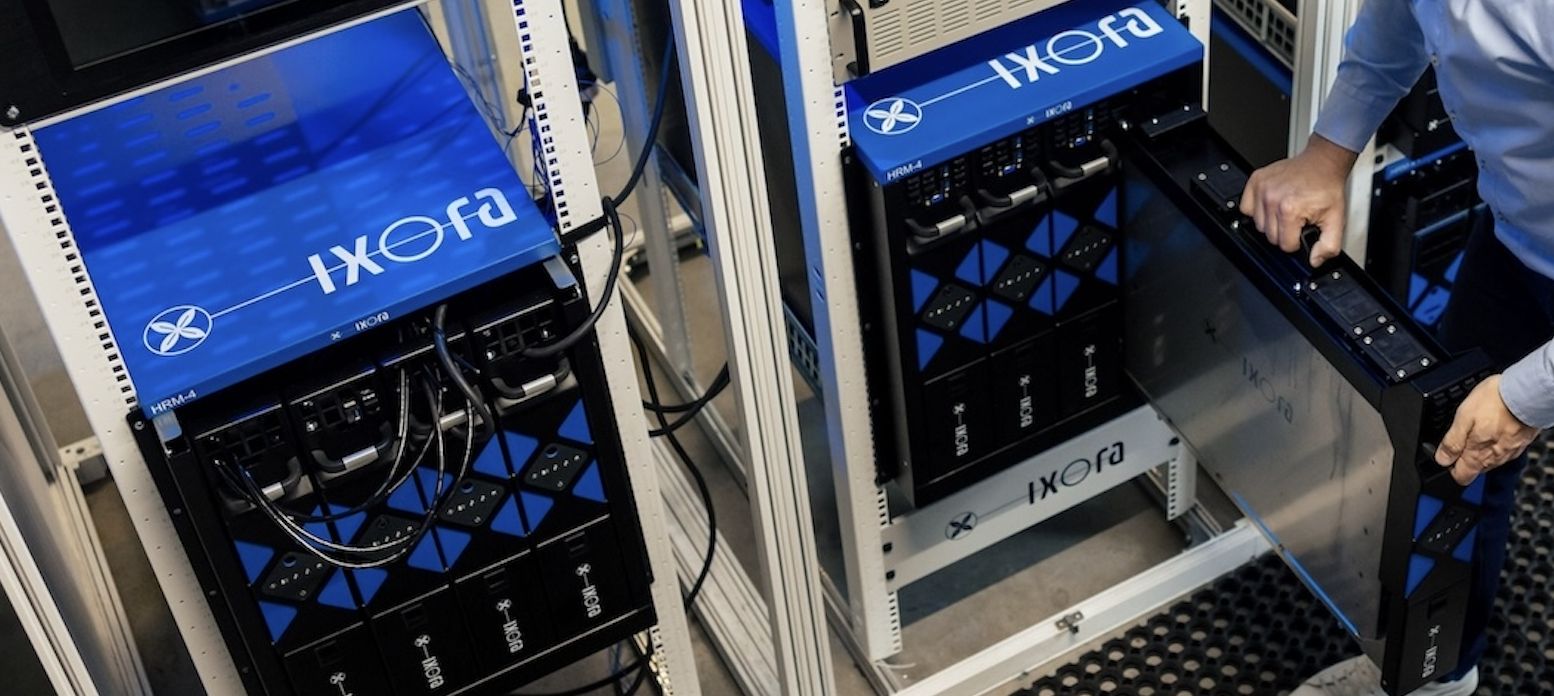With the increasing demand for data storage and processing capabilities, datacenters continue to grow at an exponential rate across the world. What most people don’t realize is how much energy is utilized to keep datacenters running efficiently.
Servers generate a significant amount of heat in a relatively small area. The amount of heat generated per server has increased with each generation, and this trend is expected to continue with upcoming generations. A major challenge is the fact that modern servers’ processors generate more heat, but they operate at lower maximum temperatures. The main issue is that the greater volumes of lower-temperature heat produced by servers are reaching the thermodynamic limits of air cooling.
For decades air cooling with fans has been used to force air movement to effectively cool IT equipment, but this cooling method has become outdated and inefficient.
Let’s take a closer look at why datacenters should stop using air cooling as soon as possible and explore immersion cooling solutions as an attractive alternative.
1. Energy Efficiency and Cost Savings
Air cooling is the most common cooling method used in datacenters, but it is also the least energy-efficient, compared to other systems. Traditional air cooling requires large cooling systems, such as CRACunits, to be installed in datacenters, which consume lots of energy resulting in high electricity bills.
This is why datacenters need to switch to immersion cooling solutions. Immersion cooling requires far less energy compared to air systems. According to The Immersion Cooling Authority, immersion cooling can cut cooling energy costs up to 90% and CapEx on new builds up to 50%!
2. Forced Air Cooling is Inadequate
Fans are simply not effective enough to provide adequate cooling for high-density server racks. In fact, they often fail to keep up with the increasingly dense server racks, which lead to hot spots. These hot spots lead to throttling down the processors and can cause equipment damage or even failures.
3. Immersion Cooling Is More Effective
Liquid cooling, such as immersion cooling, has proven to be a highly effective cooling solution for modern datacenters. This is due to its superior thermal conductivity and heat capacity. Immersion cooling can reduce server power draw by 10-20% when compared to traditional air cooling just by removing the server fans.
In an immersion cooled datacenter, the servers are submerged in a non-conductive liquid which dissipates heat from server components much more efficiently than air-cooling methods. This type of cooling system provides direct contact with the server components, allowing for continuous and uniform heat transfer. The liquid also helps reduce maintenance costs and prolongs the life of servers by reducing wear and tear on components. Immersion cooling also eliminates or minimizes the need for air conditioning in the datacenter, resulting in lower energy consumption and cost savings over time.
Besides the energy savings inside the server the energy savings in the datacenter infrastructure are significant.
With advances in liquid cooling technology, datacenters can now implement these solutions with the confidence that they will have a long lifespan and be less prone to leaks or equipment failures.
4. Faster Data Processing and Reduced Downtime
Cooling systems can significantly impact the speed of data processing time, as well as the overall productivity of datacenters. If cooling is not adequate, servers slow down or even shut down, in the worst case they may become damaged, causing prolonged downtime. Implementing liquid cooling solutions can ensure that the datacenter is operating at its optimal level, leading to faster data processing and reducing the risk of downtime.
5. Lowering Environmental Impact
Also, we must consider the environmental impact of datacenter cooling solutions. Air cooling is not only inefficient and expensive, but it also contributes to a large carbon footprint. Datacenters used as much as 1% of all the electricity in the world in 2018 and 2% in 2021, which will grow to even 3% in 2025. What will it be in 2030 when they don’t massively shift to more efficient cooling systems?
In areas with limited water resources cooling equipment can have a great impact on the environment and local communities. Some datacenter operators implemented water-saving technologies or alternative cooling methods in their air-cooled datacenters to reduce water usage and minimize the environmental impact of their operations. However, these technologies consume more energy, due to the fact that for example more fans are needed. Datacenters are trying to balance out energy and water consumption.
In addition to energy savings, immersion cooling also uses less water than air systems.
By switching to alternative cooling solutions like liquid cooling, datacenters can significantly reduce their carbon footprint and mitigate potential environmental hazards.
6. Investor Demand for Sustainable Datacenters
In recent years, sustainable investing has become a major trend, with investors actively seeking out companies that are reducing their carbon footprint. Hence immersion cooling is interesting for investors which are increasingly focusing on environmental and social governance (ESG) metrics to gauge a company’s overall footprint impact.
Are you interested in investing in the future of immersive cooling in datacenters? Take advantage of a unique opportunity to invest in iXora’s 19″ rack mountable immersion cooling solution.
While datacenters have long relied on air cooling, the future looks likely to be dominated by alternative cooling methods. Major tech companies like Facebook, Google, and Microsoft are investing in sustainable datacenters that utilize water, liquid, and other cooling methods. This is a clear indication that traditional air cooling will soon become a thing of the past.
Given the increasing demand for sustainable investing and reducing environmental impact, and the rise of more efficient cooling methods, datacenters need to prioritize exploring alternative solutions to become future-proof. The time for change is now!
[simple-author-box]



